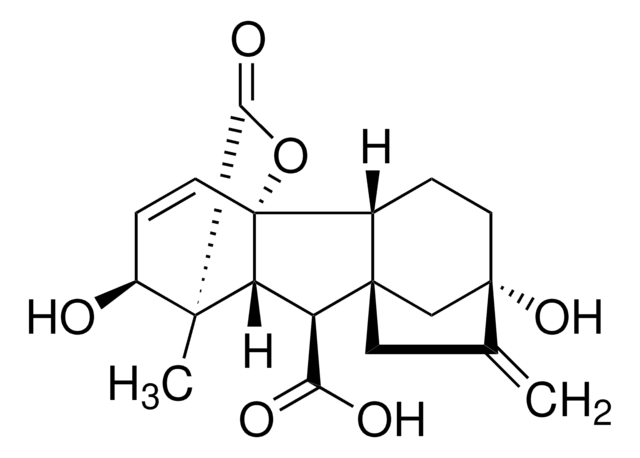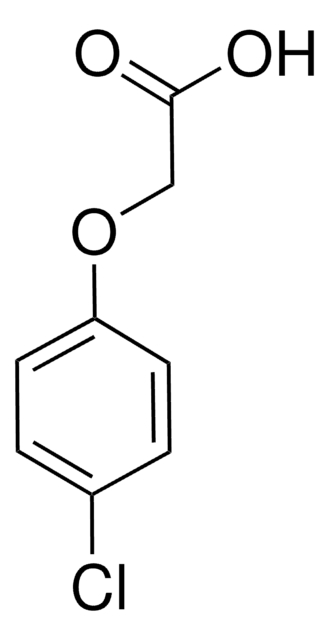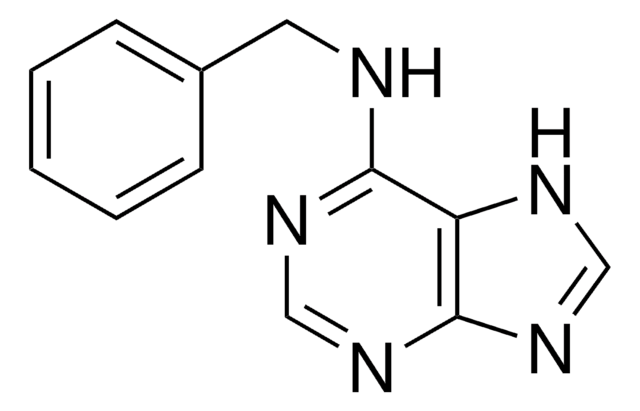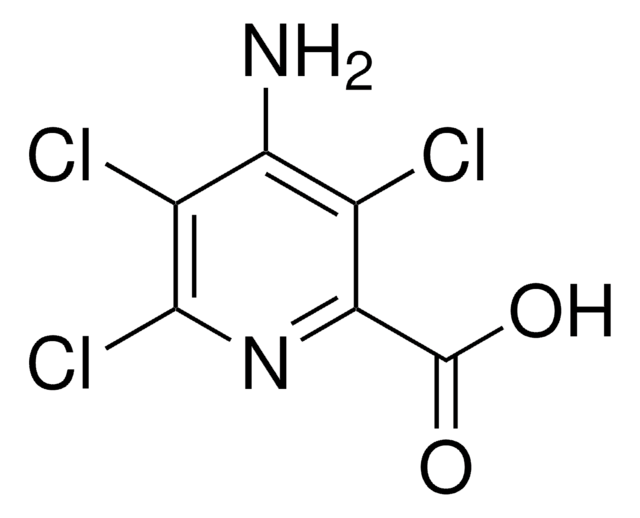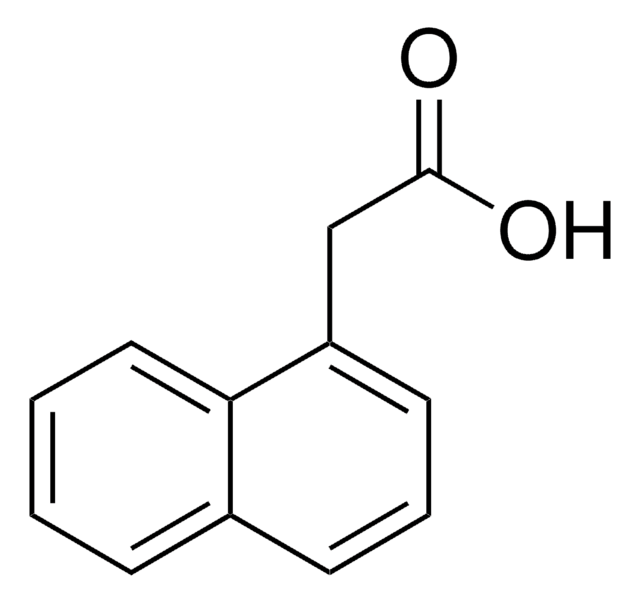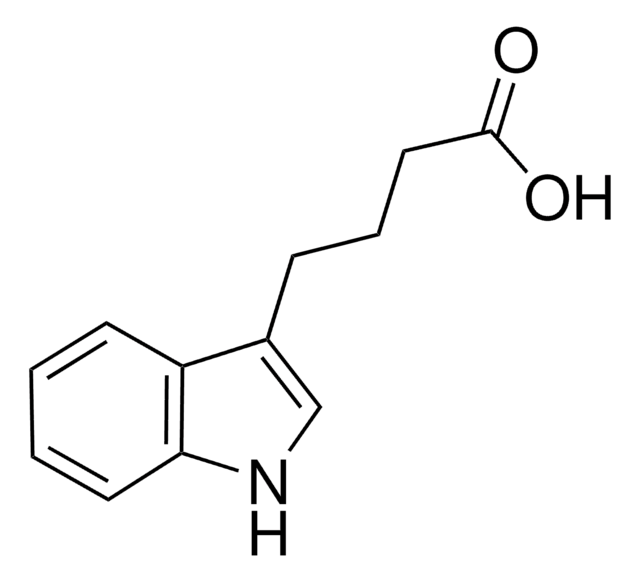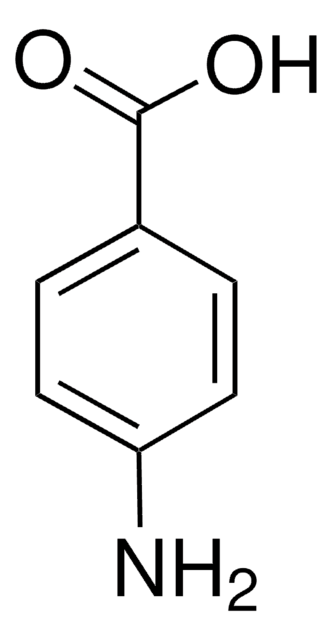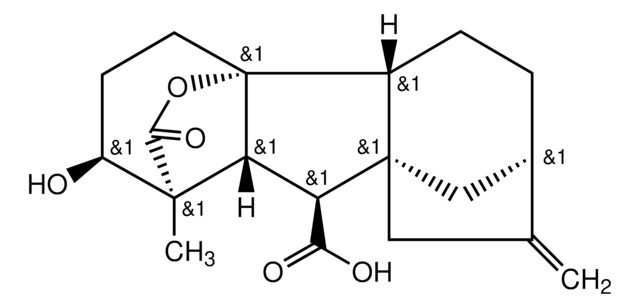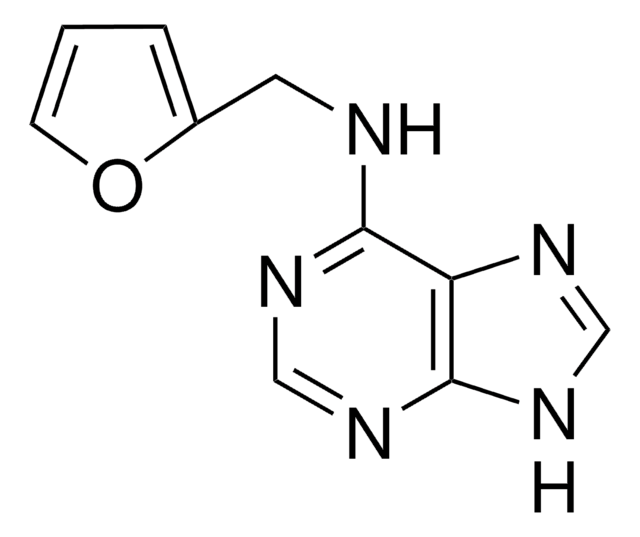C0413
4-Chlorophenoxyacetic acid
BioReagent, suitable for plant cell culture, crystalline
Sinónimos:
4-CPA
Iniciar sesiónpara Ver la Fijación de precios por contrato y de la organización
About This Item
Fórmula empírica (notación de Hill):
C8H7ClO3
Número de CAS:
Peso molecular:
186.59
Beilstein:
1211804
Número CE:
Número MDL:
Código UNSPSC:
10171502
ID de la sustancia en PubChem:
NACRES:
NA.72
Productos recomendados
Línea del producto
BioReagent
Nivel de calidad
Formulario
crystalline
técnicas
cell culture | plant: suitable
aplicaciones
agriculture
cadena SMILES
OC(=O)COc1ccc(Cl)cc1
InChI
1S/C8H7ClO3/c9-6-1-3-7(4-2-6)12-5-8(10)11/h1-4H,5H2,(H,10,11)
Clave InChI
SODPIMGUZLOIPE-UHFFFAOYSA-N
¿Está buscando productos similares? Visita Guía de comparación de productos
Aplicación
4-Chlorophenoxyacetic acid has been used in para-chlorophenoxyacetic acid (p-CPA) residue assay.
4-chlorophenoxy acetic acid (4-CPA), a chlorine derivative of phenoxyacetic acid (PA), is a plant growth regulator used as a herbicide.
Acciones bioquímicas o fisiológicas
4-Chlorophenoxyacetic acid is a synthetic auxin, that is used to induce parthenocarpic ovary growth on flowers of wild type plants.
Palabra de señalización
Warning
Frases de peligro
Consejos de prudencia
Clasificaciones de peligro
Acute Tox. 4 Oral
Código de clase de almacenamiento
11 - Combustible Solids
Clase de riesgo para el agua (WGK)
WGK 1
Punto de inflamabilidad (°F)
Not applicable
Punto de inflamabilidad (°C)
Not applicable
Equipo de protección personal
dust mask type N95 (US), Eyeshields, Gloves
Elija entre una de las versiones más recientes:
¿Ya tiene este producto?
Encuentre la documentación para los productos que ha comprado recientemente en la Biblioteca de documentos.
Los clientes también vieron
Tomato fruit development in the auxin-resistant dgt mutant is induced by pollination but not by auxin treatment
Mignolli F, et al.
Journal of Plant Physiology, 169(12), 1165-1172 (2012)
p-CPA enhances growth and quality of muskmelon fruits
Hayata Y, et al.
Plant Growth Regulation, 36(1), 13-18 (2002)
G Carbonara et al.
Farmaco (Societa chimica italiana : 1989), 56(10), 749-754 (2001-11-23)
2-(4-Chloro-phenoxy)propanoic and 2-(4-chloro-phenoxy)butanoic acids are compounds known to block chloride membrane conductance in rat striated muscle by interaction with a specific receptor. In the present study, a series of chiral analogues has been prepared and tested to evaluate the influence
K T Ranjit et al.
Environmental science & technology, 35(7), 1544-1549 (2001-05-12)
The photocatalytic degradation of p-chlorophenoxyacetic acid has been investigated in oxygenated aqueous suspensions of lanthanide oxide-doped TiO2 photocatalysts. Complete mineralization was achieved. The enhanced degradation is attributed to the formation of Lewis acid-base complex between the lanthanide ion and the
Birame Boye et al.
Environmental science & technology, 36(13), 3030-3035 (2002-07-30)
The herbicide 4-chlorophenoxyacetic acid (4-CPA) has been degraded in aqueous medium by advanced electrochemical oxidation processes such as electro-Fenton and photoelectro-Fenton with UV light, using an undivided cell containing a Pt anode. In these environmentally clean methods, the main oxidant
Nuestro equipo de científicos tiene experiencia en todas las áreas de investigación: Ciencias de la vida, Ciencia de los materiales, Síntesis química, Cromatografía, Analítica y muchas otras.
Póngase en contacto con el Servicio técnico